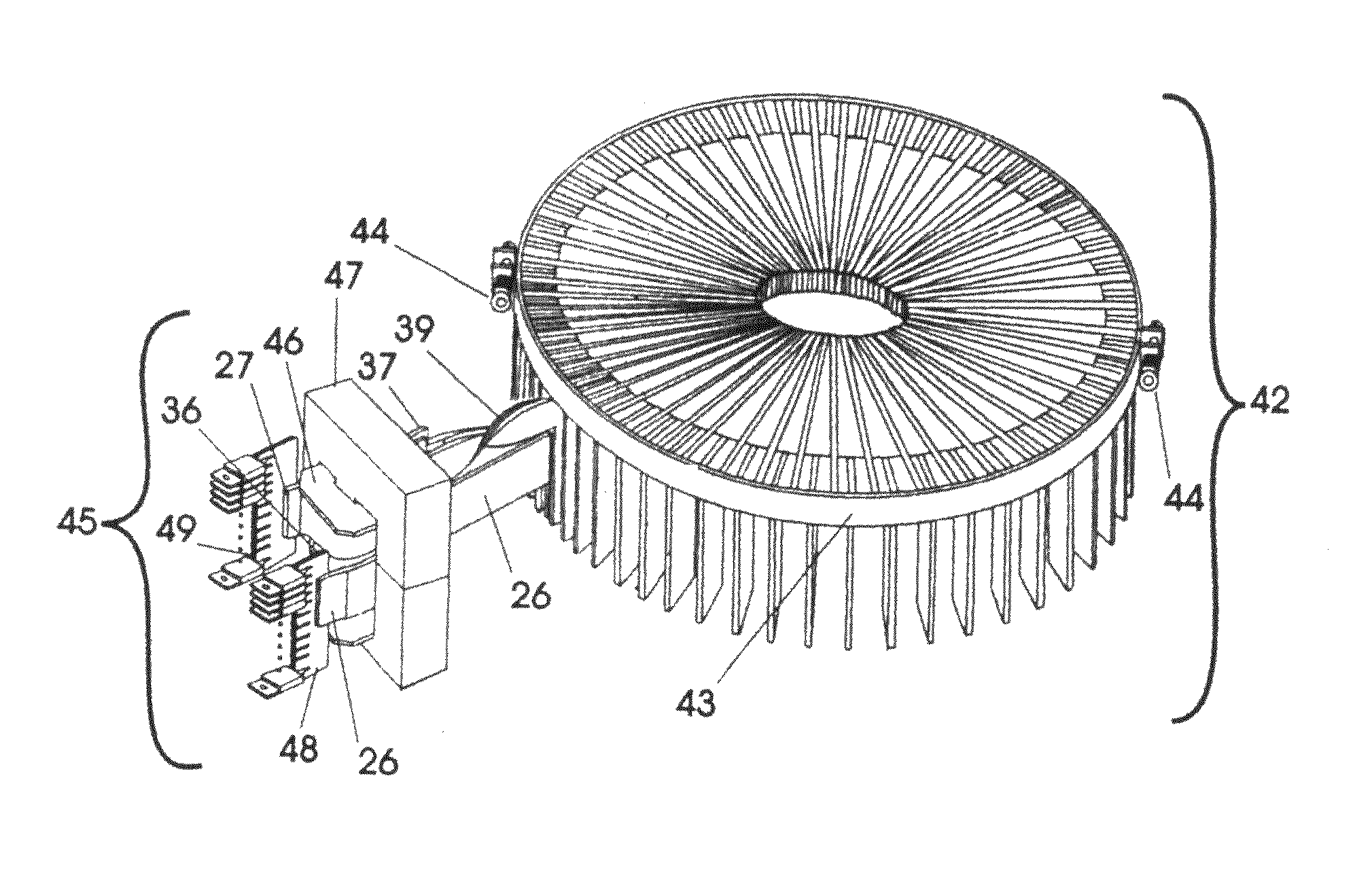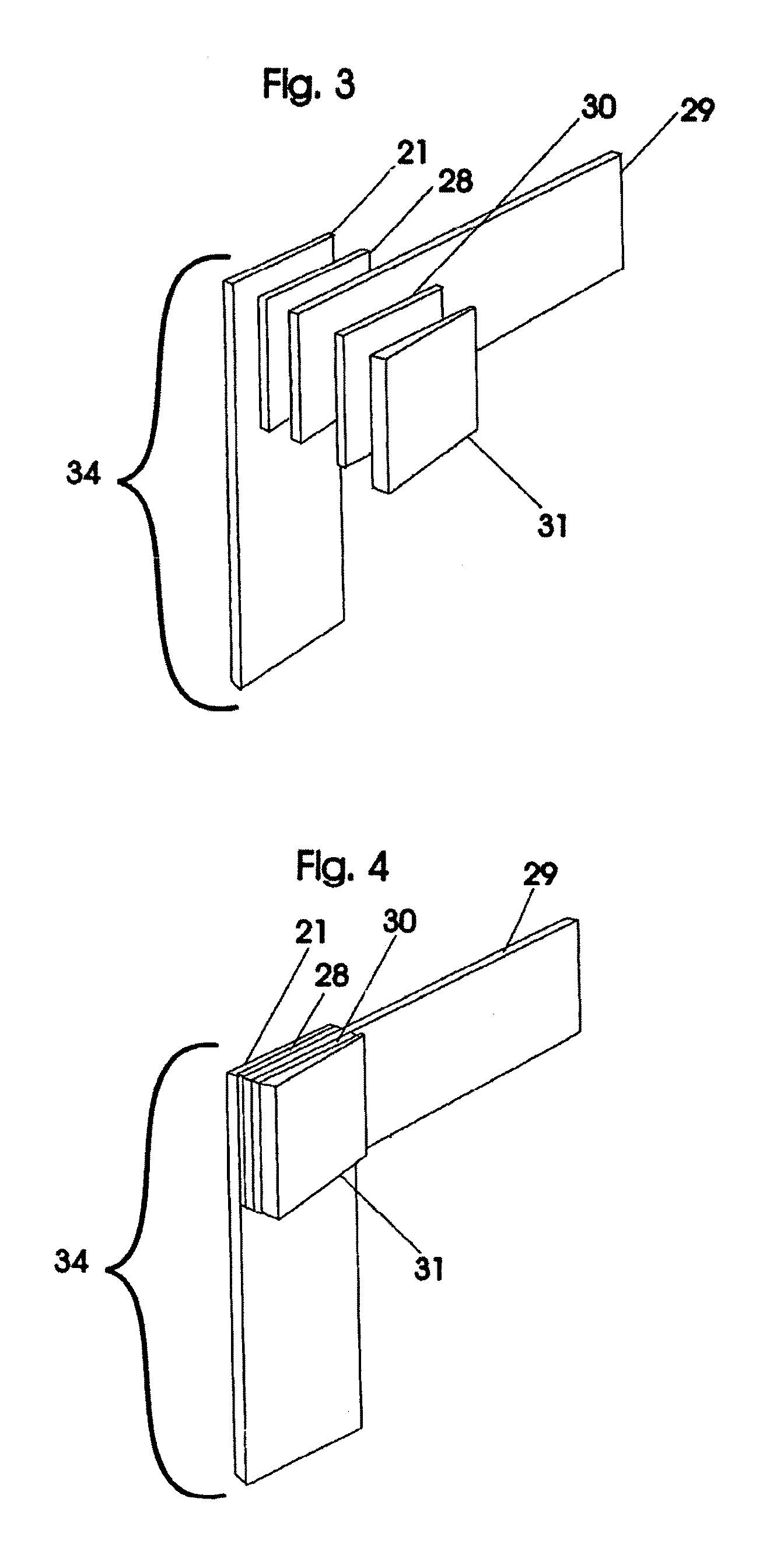Solid state thermoelectric power converter
a thermoelectric power converter and solid-state technology, applied in the direction of thermoelectric devices with peltier/seeback effect, basic electric elements, electric devices, etc., to achieve the effect of increasing the surface area available for cooling and improving the efficiency of power conversion
- Summary
- Abstract
- Description
- Claims
- Application Information
AI Technical Summary
Benefits of technology
Problems solved by technology
Method used
Image
Examples
example 1
Reduced Barriers N-Type Semiconductor Composition
[0166]
Preferred ElementRangeAmountSelenium 5% - 12%10%Bismuth40% - 60%45%Telluriumremainder to 100%45%
[0167]This n-type selenium-bismuth-telluride-based semiconductor composition represents a formula [Bi2Te3]0.35[Bi2Se3]0.65 approximating a ratio of one part dibismuth tritelluride and two parts dibismuthtriselenide. This product appears to be crystalline.
example 2
Reduced Barriers P-Type Semiconductor Composition
[0168]Element Range Preferred Amount
[0169]
Antimony28% - 32%30%Bismuth 8% - 12%10%Telluriumremainder to 100%60%
[0170]This p-type antimony-bismuth-telluride-based semiconductor composition represents a formula [Bi2Te3]0.35[Sb2Te3]0.65 or about one part dibismuthtritelluride and 2 parts diantimonytritelluride. Diantimonytritelluride structural form is a glass. The structure of dibismuth-tetraantimony-nonatelluride as produced by the method described herein appears to be crystalline.
[0171]Copper and some other elements greatly degrade performance of these semiconductors; therefore high purity elements are needed. Each chemical element should be at least 99.9% pure and preferably 99.999% pure.
[0172]Semiconductors are protected from infiltration of copper atoms and components of solder by first coating the wafer edges with a non-conductive high temperature-melting ink, brand named “mark-tex” high temp 44 manufactured by DYKEM, preferably co...
PUM
 Login to View More
Login to View More Abstract
Description
Claims
Application Information
 Login to View More
Login to View More - R&D
- Intellectual Property
- Life Sciences
- Materials
- Tech Scout
- Unparalleled Data Quality
- Higher Quality Content
- 60% Fewer Hallucinations
Browse by: Latest US Patents, China's latest patents, Technical Efficacy Thesaurus, Application Domain, Technology Topic, Popular Technical Reports.
© 2025 PatSnap. All rights reserved.Legal|Privacy policy|Modern Slavery Act Transparency Statement|Sitemap|About US| Contact US: help@patsnap.com



